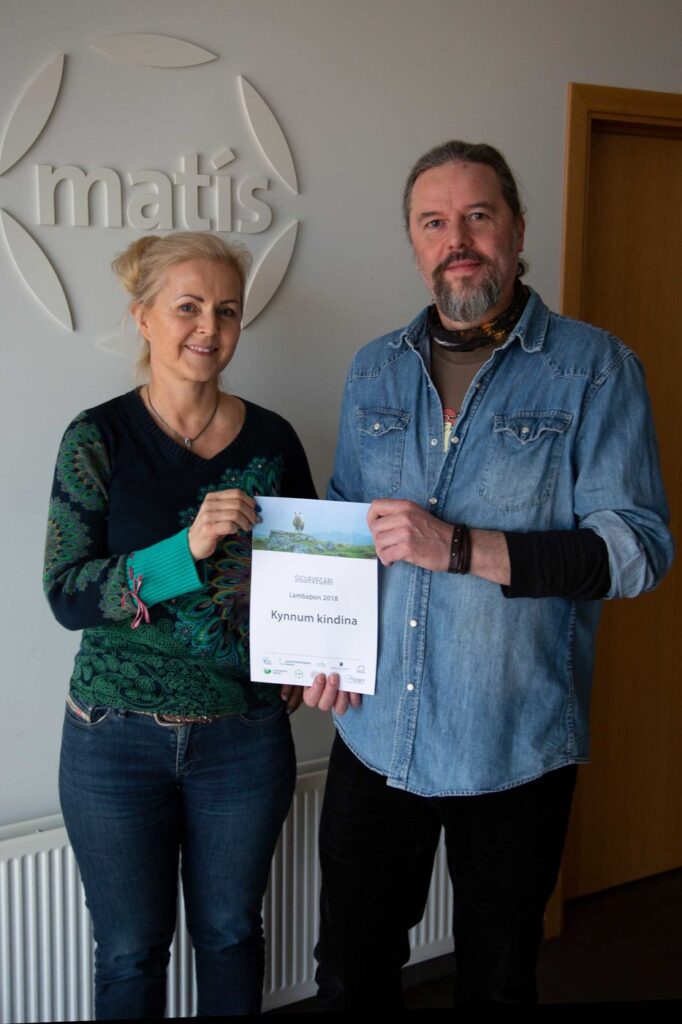9.-10. last November An idea competition, a so-called hackathon, on value creation in the value chain of sheep was held for the first time. The competition was called Lambaþon, but in Lambaþon the competitors have 24 hours to put together ideas, which they then get three minutes to present to the jury after these 24 hours.
A total of 27 people signed up for the game, some got off the train but then five powerful teams presented their ideas to the jury. It should also be noted that a large number of ideas were received by e-mail lambathon@matis.is and we hope that those creators will be able to attend next year.
This time the jury worked according to the following values:
- How much does the value creation of the farmer who implements the idea increase? How much does it cost consumers?
- Does the idea include constructive proposals for the working environment of farmers?
- Does the idea have a positive environmental impact?
- Does the idea involve the development of new products or services? Marketing Ideas!
- Does the idea beat the heart of the team with the idea? The chemistry, the energy and the presentation!
The jury consisted of Guðjón Þorkelsson, who was its chairman, Arnar Bjarnason, Bryndís Geirsdóttir, Gunnfríður Hreiðarsdóttir and Ragnheiður Héðinsdóttir.
Lambthon was run by Matís, Landbúnaðarháskóli Íslands, Bifröst University, Landgræðslan, Ráðgjafarmiðstöð landbúnaðarins, Matvælastofnun, Landssamtök sauðfjárbænda, Samtök ungra bændar, Háskóli Íslands and Icelandic Lamb.
Introducing the sheep
The idea that won the first Lambaþon was "introduce the sheep" The members of the group were Arnþór Ævarsson, Magnea Jónasdóttir and Kári Gunnarsson.
The prelude to the winning idea was that Arnþór set up a photo exhibition with portraits of sheep at Magnea in Dalakaffi by Reykjadalur in Ölfus. Magnea and Arnþór actually own their own sheep in a small livestock herd, which was the subject of the exhibition, on a farm in Ölfus where Magnea lives with her husband. The tourists thought the show was magnificent and some people could not believe that the sheep were real, some had never seen a sheep on their travels around Iceland or had never seen a sheep in their lives.
The photo exhibition and the reception made it clear to them that this could be a much bigger idea nationwide, as the sheep is used as a resource for the benefit of sheep farmers. "Introducing the sheep" is about promoting sheep as an attraction for tourists and giving tourists the opportunity to learn about and experience the sheep in an easy way, such as by observing or participating in various activities in the countryside or at events related to sheep. .
They further developed the idea during Lambaþon and made a proposal for a web system under the working title "Sheepadvisor" which was to some extent similar to the Tripadvisor web system that most people are familiar with. The idea was also expressed that it would be possible to connect this to the web system www.matarlandslagid.is. The food landscape is a database that Matís has developed and can offer countless possibilities but is not fully developed yet. Farmers could connect to the distribution map of the food landscape and enter information about products and / or services themselves. In the idea of the Sheepadvisor web system, tourists could get an overview nationally and book sheep-related tourism, accommodation and more as well as current events. Examples of this could be sightseeing tours or walks on pastures and experiencing lambing, running, grazing, and of course dishes. Farmers could further link this to other things they could have on offer, such as refreshments, accommodation or sales of woolen products, meat products, handicrafts or other. Similarities were also noted among sheep farmers in New Zealand. In this way, those sheep farmers who are interested in tourism could decide their working hours in the tourism industry and decide for themselves what is on offer and when, depending on what suits each farm. The web system could also offer a reward system with review and rating options in the style of Tripadvisor.

The sheep is so much more than just meat and fleece sweaters, it is a big part of our culture and towards foreign tourists there are examples of the introduction of the sheep being the highlight of the Iceland trip. The cheek is therefore equal to the country's natural pearls and is a resource that should be utilized and made Iceland's brand internationally. Lambaþon's winning team is convinced that educating and increasing the tourist experience of the Icelandic sheep will increase the demand for all products and services related to the Icelandic sheep, improve the welfare of sheep farmers and increase value in the entire value chain of sheep.
Fjárborg in sheepfolds
In 2007, Hlédís Sveinsdóttir founded the project kindur.is, where consumers were offered to buy their own or foster child. The legal environment has changed since then and that is why doors are now opening for farmers to further increase value creation. The idea is that anyone can buy a sheep, keep it in foster care with a farmer and thus become a "remote farmer". The person owns the sheep according to law, but pays the farmer a fee for keeping the sheep on a monthly basis.
Farmers in Fjárborg can offer the various services for the owners of the sheep, such as meat soup day, genealogy information, photos of the sheep regularly, an open day for lambing, tanning of sheep, slaughtering and much more.
Fjárborg in sheepfolds was an idea that Hlédís Sveinsdóttir, Sólveig Bjarnar Reynisdóttir and Elín Guðnadóttir worked on.
Prize money - managed grazing in the forest is for everyone's benefit
The forest lamb enjoys the shelter
of a forest that is growing today
The grass as well as the birch bites
farming for the benefit of all
Project idea for money that utilizes browsing in the forest floor, which can be more nutritious and more per unit area than in pastures. A forest, over the first years of growing up, utilizes microbial flora (and possibly some nutrition as well) which is generated in the form of organic waste (lamb tail) and money keeps down competitive vegetation. Light grazing pressure can strengthen the root system of bottom vegetation and soil erosion is negligible (Does not apply to overgrazing). Money benefits from the chewing of bottom vegetation, the fall weight of lambs is greater, which gives extra money in sales. If the forest is uplifted (which is almost a condition) then the handling of the forest is exemplary and beautiful for outdoor activities. The money goes to the forest, everyone knows that. If it were allowed to walk in the woods then the gathering of the mountain is unnecessary. Money that improves land quality should impress the buyer. Longer slaughter time means new slaughter over a longer period. A forest binds carbon and converts poor land into rich. Groundwater is purified and there is a more even flow over the year, less risk of disasters. Well-groomed forests are an attraction for humans, no less than sheep.
Hlynur Gauti Sigurðsson, Sæmundur ISK Þorvaldsson, Sighvatur Jón Þórarinsson and Guðríður Baldvinsdóttir worked on the idea.
The green lamb
The Green Lamb is a certification issued by a recognized regulatory body.
The certification ensures:
- Healthy and healthy product.
- Sustainability on the farms where the animals are raised.
- Good welfare of the animals.
- Carbon neutral lamb.
- Degradable packaging.
- Minimum antibiotic use.
- Based on the concept of an exemplary cow farm
The certification is not only for money but also for all products that meet the Green Lamb's standards may receive the stamp, despite not producing lamb. For example, vegetables such as tomatoes, cucumbers, peppers, carrots and potatoes. Pig farms (eg farms that produce their own feed). Chicken farms that use Icelandic ingredients for feeding. Horsemanship for breeding (eg blood farms).
The Green Lamb was led by Sóley Erna Sigurgeirsdóttir, Steinþór Logi Arnarsson, Sunna Þórarinsdóttir and Ísak Jökulsson.
Woolpa
The project vision for the Icelandic sheep consisted, among other things, of encouraging innovation in the field and interdisciplinary collaboration between farmers and designers. When wool is given more respect, it becomes more valuable. By looking at the possibilities of Icelandic wool and its advantages rather than disadvantages, there are countless possibilities available because the wool is hard, warm, insulating, water-repellent and it breathes. A group of design graduates from the Iceland Academy of the Arts presented ideas for clothing, accessories and shoes that were all made exclusively from Icelandic wool that was dry felted.
Woolpa was run by Margrét Arna Vilhjálmsdóttir, Kristín Soffía Þorsteinsdóttir, Bjarmi Fannar Irmuson, Þórður Jörundarson and Ari Jónsson.

